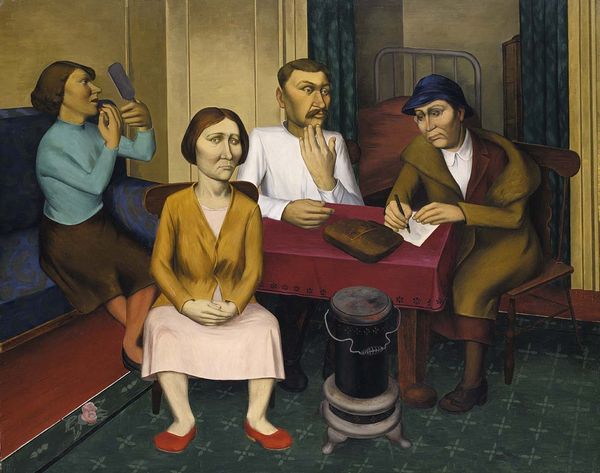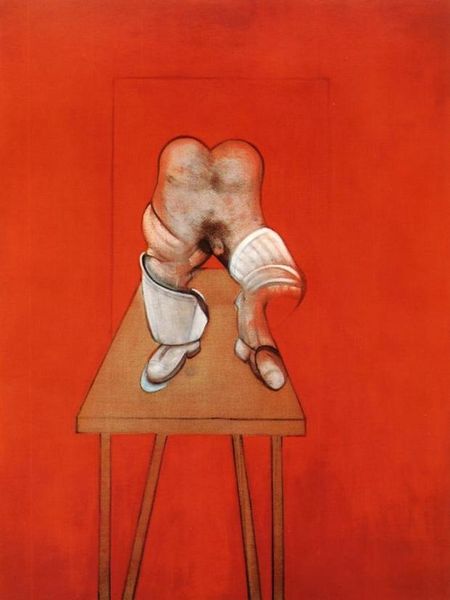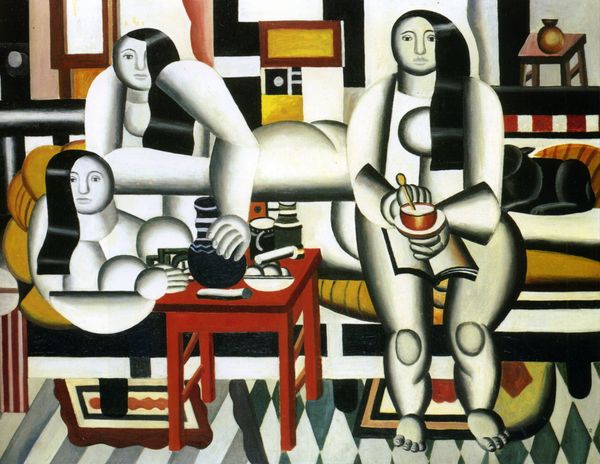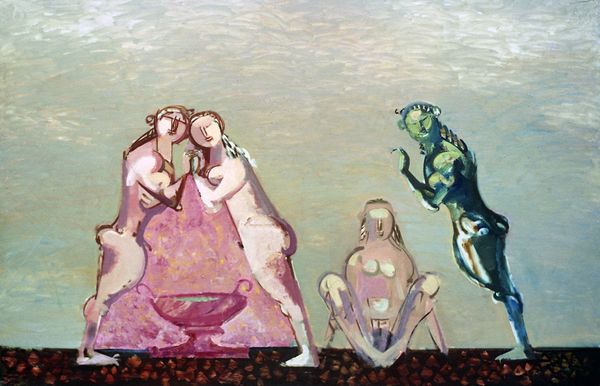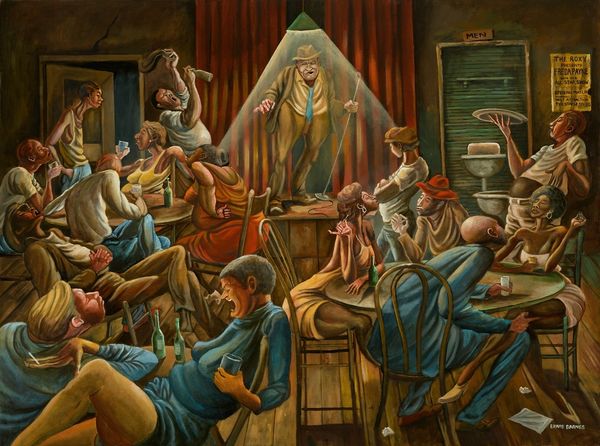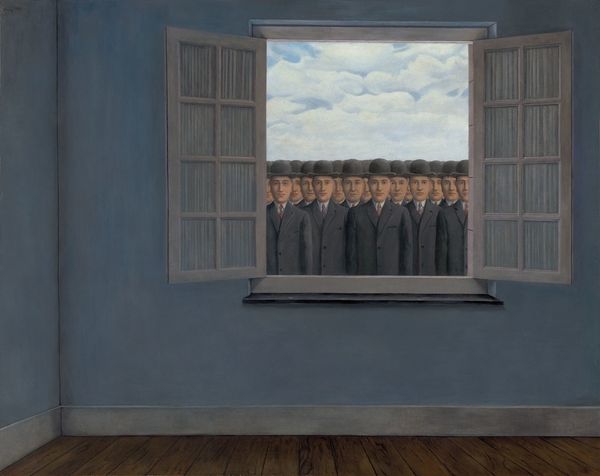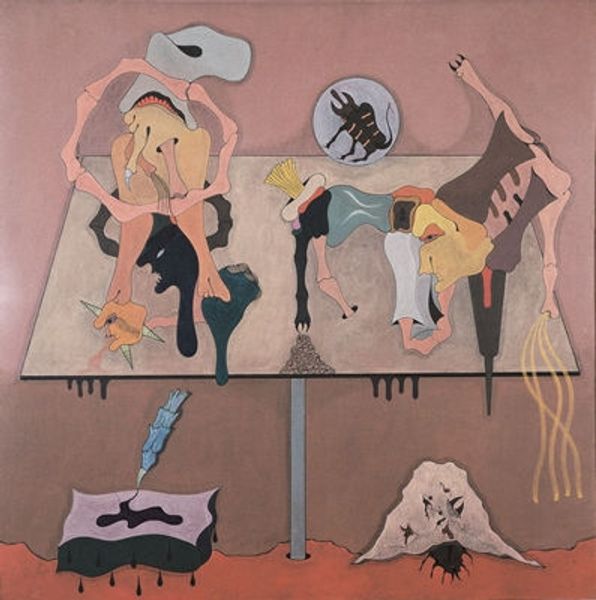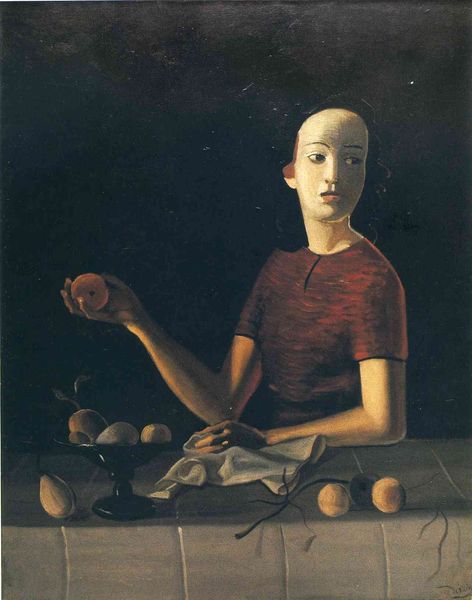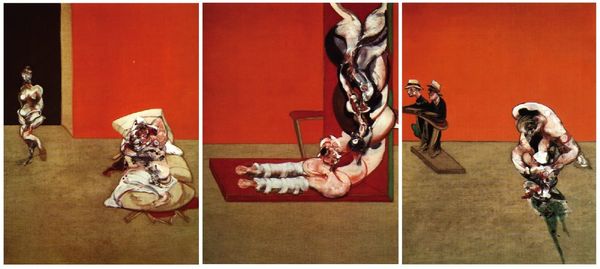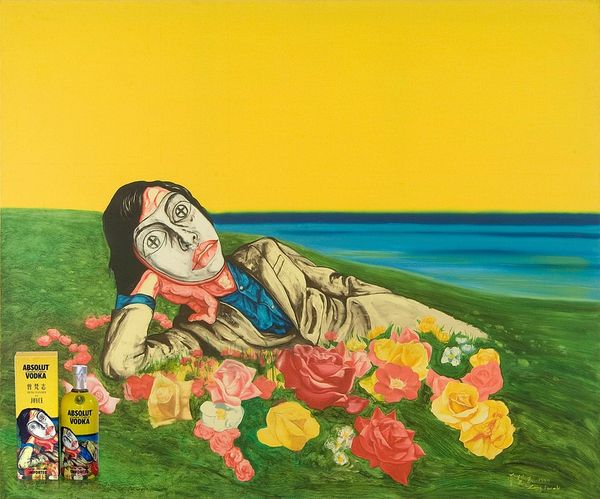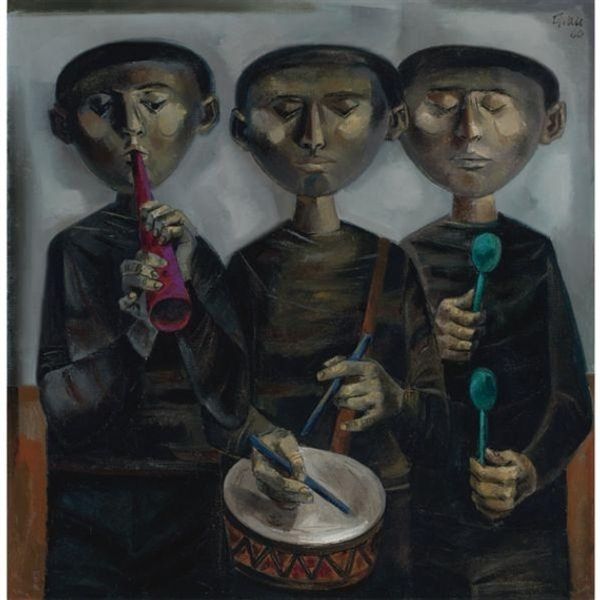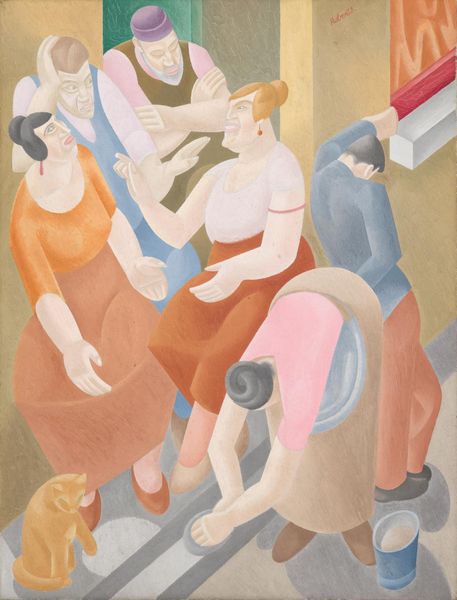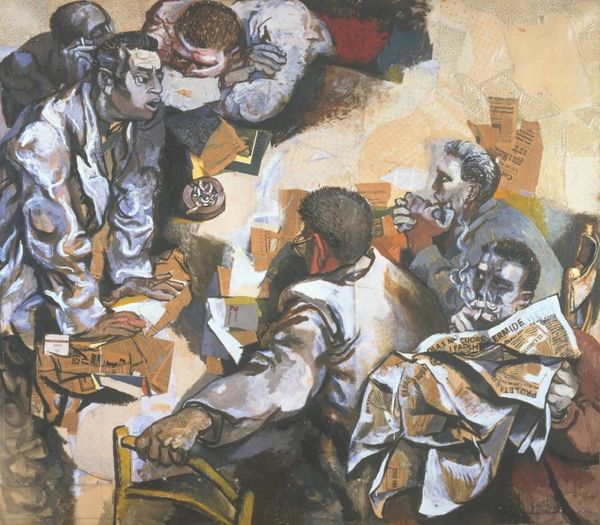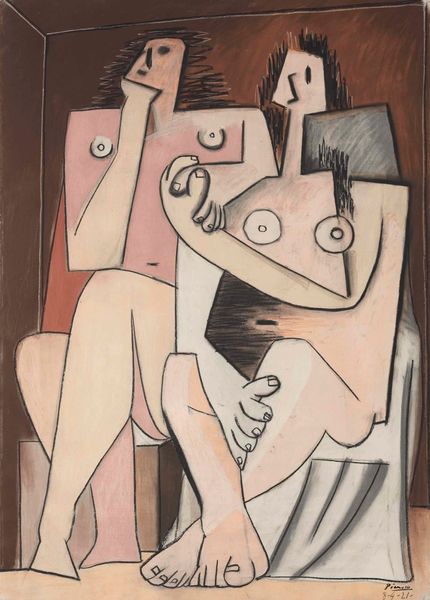
Dimensions: 220 x 395 cm
Copyright: Zeng Fanzhi,Fair Use
Editor: Here we have Zeng Fanzhi's "The Last Supper," painted in 2001. It's an oil painting depicting a group of young people around a table. There's something unsettling and a bit sinister about the faces...How would you interpret this work? Curator: Initially, one is struck by the blatant appropriation of Da Vinci’s “Last Supper.” Note how Zeng manipulates the composition, replacing traditional religious figures with youth wearing red scarves. It creates a striking tension between the familiar and the alien. Editor: That contrast definitely stands out. Is it fair to see a tension also in the flatness of the characters, the color and then the space in general? Curator: Precisely. Examine the distorted figures; their elongated faces and mask-like features contribute to an unsettling psychological landscape. Note the emphasis on line and form, almost mimicking early examples of expressionism where raw feelings eclipse formal considerations. Editor: So the way they’re painted is as important as *who* is painted, or *what* the painting refers to. Curator: Indubitably. Focus on the texture. Fanzhi uses visible brushstrokes that heighten the work’s emotional intensity. Observe the limited palette—red, grey, and touches of blue—which reinforces the mood and focuses attention. Consider the symbolism of the watermelon slices replacing bread and wine. This could symbolize the decay of the Chinese revolution's promise in the late 20th century. Editor: It’s fascinating how analyzing the formal elements provides insights to the bigger picture! Curator: Yes, visual elements allow us access to interpret historical contexts and themes that give further shape to meaning. Editor: Thank you; I appreciate that deeper understanding of Fanzhi’s “Last Supper."
Comments
No comments
Be the first to comment and join the conversation on the ultimate creative platform.
